protein
Latest

Meta's newest AI determines proper protein folds 60 times faster
Meta researchers have developed a first-of-its-kind metagenomic database, the ESM Metagenomic Atlas, that could accelerate existing protein-folding AIs performance by 60x.

DeepMind's AI has now catalogued every protein known to science
On Thursday, DeepMind announced that it is expanding the number of proteins listed in its publicly-available AlphaFold Protein Structure Database to basically all of them.
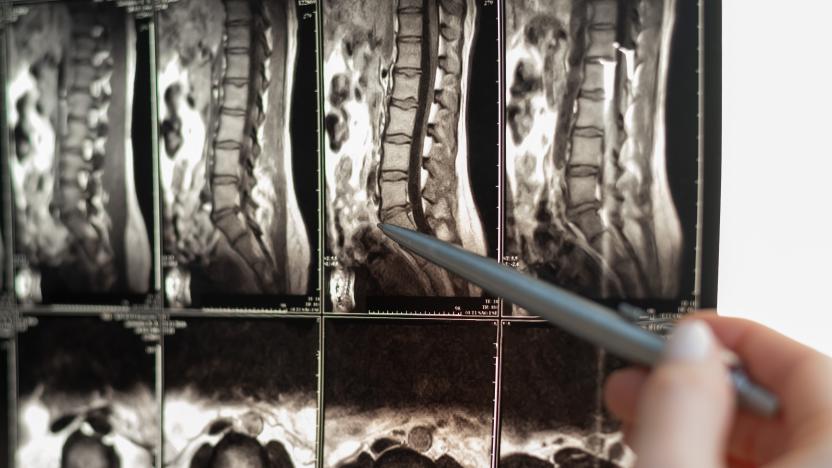
AI discovery could advance the treatment of spinal cord injuries
Scientists have used a combination of AI and robotics to develop an enzyme that could treat spinal cord injuries and help people walk again.
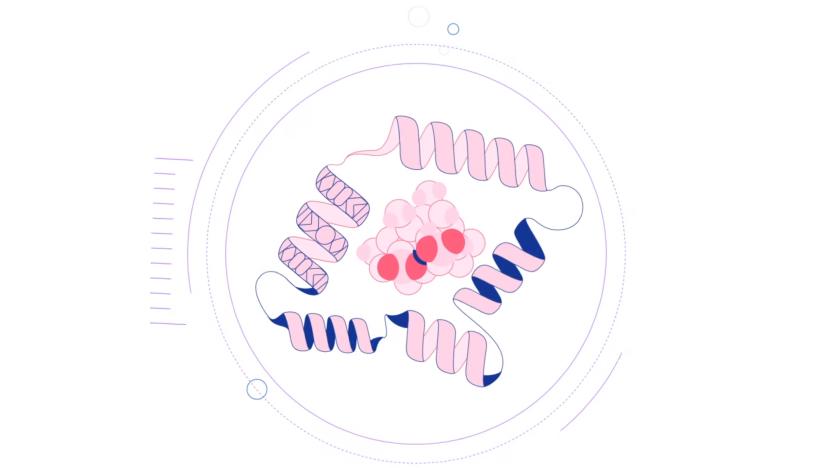
DeepMind's latest AI breakthrough can accurately predict the way proteins fold
Alphabet-owned DeepMind may be best known for building the AI that beat a world-class Go player, but the company announced another, perhaps more vital breakthrough this morning. As part of its work for the 14th Critical Assessment of Protein Structure Prediction, or CASP, DeepMind's AlphaFold 2 AI has shown it can guess how certain proteins will fold themselves with surprising accuracy. In some cases, the results were perceived to be "competitive" with actual, experimental data.

400,000 new people have joined Folding@Home's fight against COVID-19
The Folding@Home community has turned its attention toward the fight against COVID-19, and it now has massive computational power at its disposal as a result. The distributed computing project is now working with about 470 petaflops of output in its quest to fold proteins, or enough to eclipse the world's top seven supercomputers combined. That's more than twice the 149 petaflops of sustained output from the record-setting Summit supercomputer -- helped in part by the Summit team joining the project over two weeks ago. There's been a roughly 1,200 percent increase in contributors, Folding@Home said, with 400,000 new members in the past two weeks.

Get ready to eat bugs if you want to live beyond 2050
By 2050 there will be an estimated 10 billion humans living on this planet. Beyond that being a lot of mouths to feed, those folks will be, on average, wealthier than today's population, with a taste for the foods found in regions like the US and Western Europe. But we simply don't have the capability, the land or the production resources to ensure that many people can eat a cheeseburger whenever the mood strikes. Luckily, researchers from around the globe are working on alternative-protein sources to supplement our existing beef, pork and chicken.
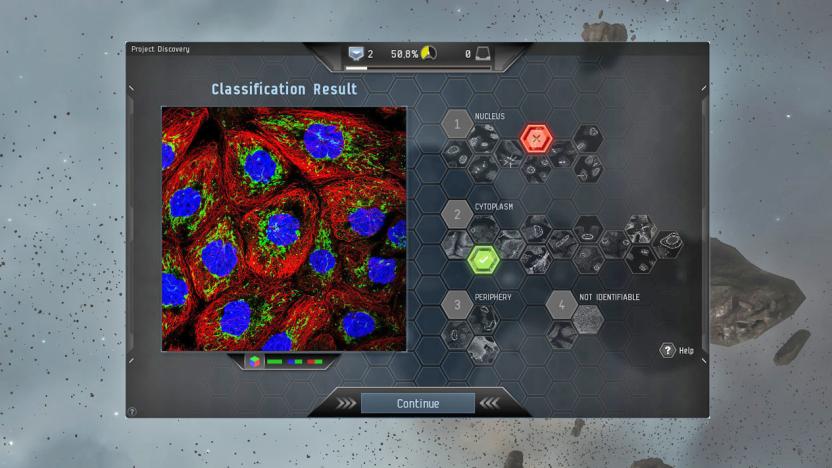
‘EVE Online’ crowdsourced science data will soon be publicly available
In March 2016, space MMO EVE Online added the Project Discovery minigame which let players classify proteins in their downtime to help researchers. After collecting data for over two years, the project's team recently uploaded it to the publicly-available Human Protein Atlas database for scientists to use all over the world.
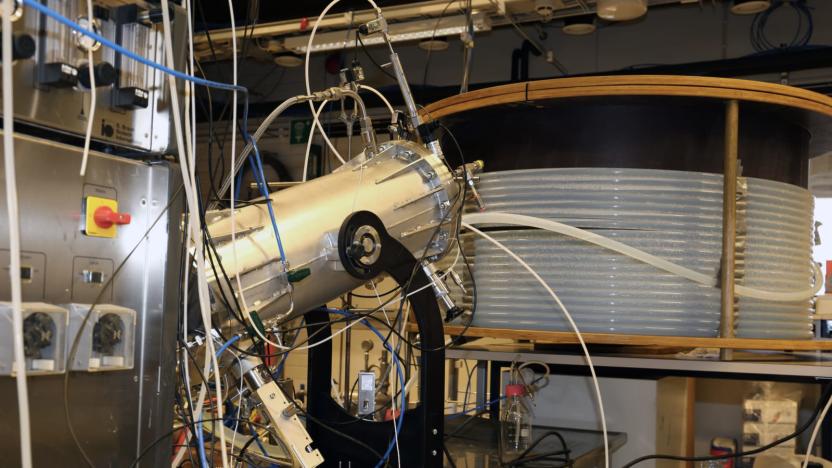
Scientists want to create animal feed out of light and electricity
Figuring out how to feed the Earth's population is no small feat, which is why a recent development is so exciting. Researchers at the Lappeenranta University of Technology and VTT Technical Research Centre of Finland have figured out a way to produce single-cell protein from electricity and carbon dioxide. It can be manufactured anywhere energy (wind farms, solar energy, etc.) and light are available.

Extremely detailed images of living cells can now be taken over time
Advanced microscope technology now lets us view objects at the nanoscale, meaning, when it comes to biology, we can see details of living cells that were never possible before. But doing that comes with a few requirements that have been fairly limiting. For instance, you have to be able to pack a lot of fluorescent dye into the object you want to see and you need that dye to be really stable. Typically, those sorts of dyes grab onto proteins in the object, but proteins are often not distributed densely enough, limiting how much dye can be introduced. Also, these fluorescent dyes tend to bleach out really quickly, only giving researchers a few seconds of imaging time.
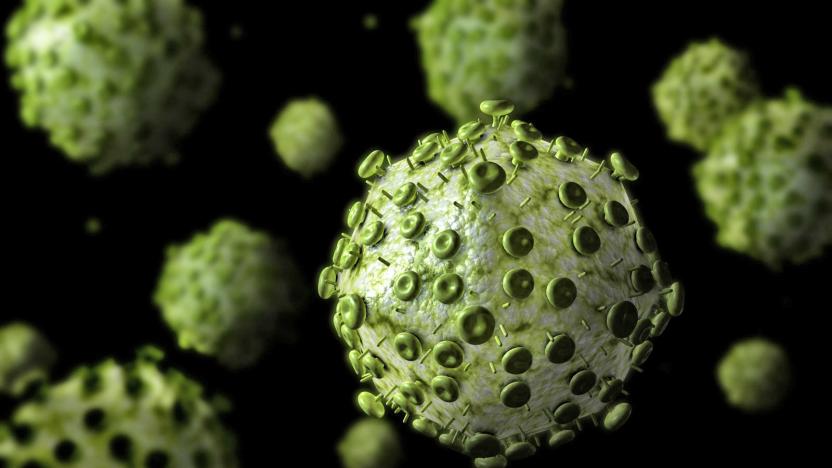
HIV breakthrough may help scientists kill sleeping virus cells
AIDS patients must endure a lifetime of drugs because the virus conceals itself in the immune system and reactivates with a vengeance once the treatment stops. However, French scientists have discovered a marker that makes it possible to identify dormant, HIV-infected T-cells from healthy ones. That could lead to drugs that target those "reservoir cells," eradicating the virus completely and curing the patient.

Researchers design sensors that can detect single protein molecules
Carbon nanotubes promise to lead to some exciting new breakthroughs in computing, but researchers at MIT are now putting them to use in medicine and chemical engineering as well. According to a new paper published in the journal Nature Nanotechnology, MIT engineers have modified carbon nanotubes to create instruments sensitive enough to detect a single protein molecule as it is secreted by a cell.

Protein fingerprinting could shed light on Alzheimer's
Scientists know that the proteins in our bodies can sometimes fold and form clumps called amyloids, which lead to neurodegenerative diseases. However, they still don't fully understand the whole process -- there's just no efficient way to examine the clumps. Since understanding amyloid formation could be the key to preventing or developing treatments for conditions like Alzheimer's and Parkinson's, a team of researchers have developed a technique to measure individual protein molecules' properties.

Gamers beat scientists to making a protein discovery
It's no great shock to see citizen scientists make discoveries that professionals miss, but making it through a video game? That's different. Gamers playing Foldit, a puzzle title that has teams trying to fold the best protein, have identified the shape of a protein before scientists (including two trained experts and 61 University of Michigan undergrads) could manage the feat. And it's not as if there were legions of contributors, either, as it took a relatively modest 469 players to help out.

Police could soon identify you by your hair proteins
Police and archaeologists regularly depend on DNA evidence for identification, but it has a serious flaw. DNA degrades under environmental conditions like heat and light, so it may be useless even if you have a ton of samples. However, Lawrence Livermore researchers have a better way: they've established a method of identifying humans based on hair protein markers. The markers are much more resilient than DNA (scientists found markers in remains about 250 years old) while remaining unique, with no one person sharing the same marker count and patterns. You only need a few hairs to get a result, too, and the ultimate goal is to pinpoint someone using a single strand of hair.
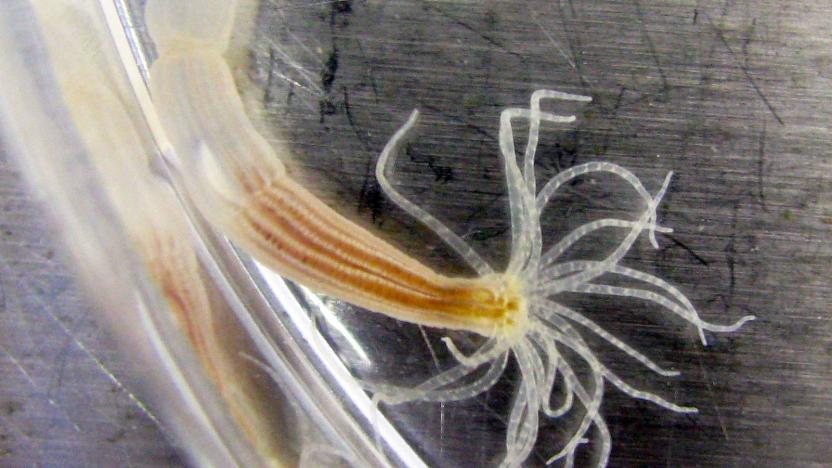
Sea anemones could be the key to treating hearing loss
Sea anemones could soon do a lot to help those of us living above the water. Researchers have discovered that proteins used by starlet sea anemones to repair their cells also repair the sound-sensing cells in mice and other mammals. If you bathe cells in those proteins for long enough (the team tried for an hour), they rapidly restore molecular links that bundle hearing-related hair cells together. In theory, you could reverse hearing damage among cells that haven't been permanently lost -- that exceptionally loud concert might not permanently limit your listening enjoyment.

Scientists want to make buildings from bone
A cityscape made of bone and eggshell might sound like the set for the final act of some big-budget fantasy epic, but the idea could help support ever-growing populations in our cities -- and reduce carbon emissions in the process. According the University of Cambridge, typical materials like concrete and steel make up almost 10 percent of global carbon emissions. Before they even get to the place of construction, both materials need high temperatures to be processed, and thus a whole load of energy. Researchers are hoping that artificial bone and eggshell, made of protein and minerals, could one day stand in for traditional building materials.

See the unusual way cancer cells spread
In many ways, the biggest problem with fighting cancer is containing it: you may kill the main tumor site, but there's a real chance that it'll spread and reemerge as a threat. At last, though, scientists have a better understanding of how that migration happens. British researchers have learned that cancer cells invoke an unusual survival mechanism when they start to float through the body. Proteins on the cell surface (integrins) switch from their usual role, adhesion, to internal signalling that has the rest of the cell protect itself against death. The cancer is steeling itself for the journey, in other words.

'EVE Online' now rewards you for helping science
At last, playing a ton of EVE Online can do a lot of good in the real world. As promised, the massively multiplayer space title now includes a Project Discovery minigame that has you contributing to real science. If you offer to classify proteins in between space flights, you'll both help scientists understand the proteins' roles in the human body (especially relating to disease) and earn in-game rewards ranging from ISK currency to loyalty points. You don't have to be a paying EVE subscriber to participate, so it won't hurt to give the project a go if you're eager to advance medicine while you explore the virtual cosmos.

Mini bioreactor makes life-saving drugs in the field
Paramedics and field medics can patch up some wounds on the spot, but they're usually stuck if they have to administer specialized drugs. What if you need medicine that health care workers don't have on hand? You might not have to rush back to the hospital in the future. Researchers have created tiny, microfluidic bioreactors that generate the proteins you need for medicine. At its heart are two very long (16 feet) channels wound into an extremely tight pattern, and divided by a customized, porous membrane -- one channel feeds chemicals, while the other hosts the reactions that produce your drug. You only have to shake the device to send protein from one side to the other and get the medicine you need.

The prose at the end of the universe
For over a decade, Canadian poet Dr. Christian Bök has toiled to create living prose. Bök calls the project The Xenotext and, should he be successful in his attempts, he will have done something truly special. The idea, at its core? To encipher poetry within an immortal bacterium's genome. Poetry that will last forever. "A big concern is the protection of valuable information in the case of a nuclear catastrophe," Pak Chung Wong told the New Scientist in 2003. Wong, then an information technologist at the Pacific Northwestern Laboratory, had just enciphered some lyrics from "It's a Small World" into the genome of Deinococcus radiodurans, a bacterium that can survive in extreme conditions. Wong theorized that the DNA of bacteria, and perhaps even hardy organisms like cockroaches and types of weed, could be used to preserve our data for future generations.









